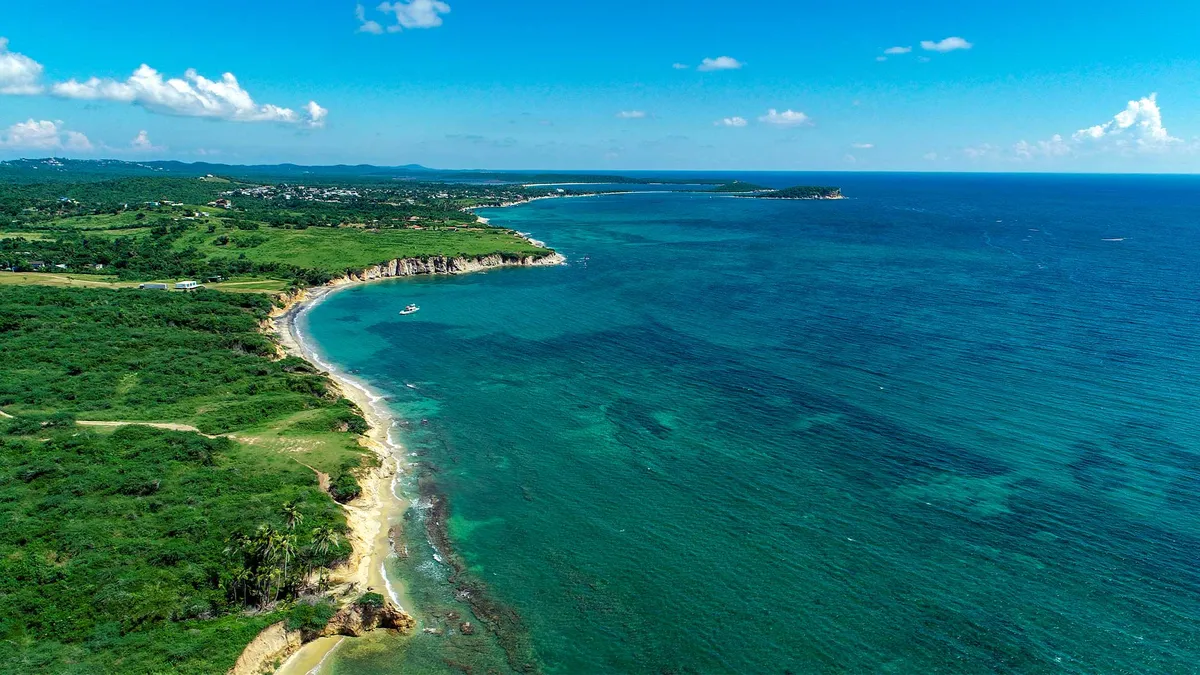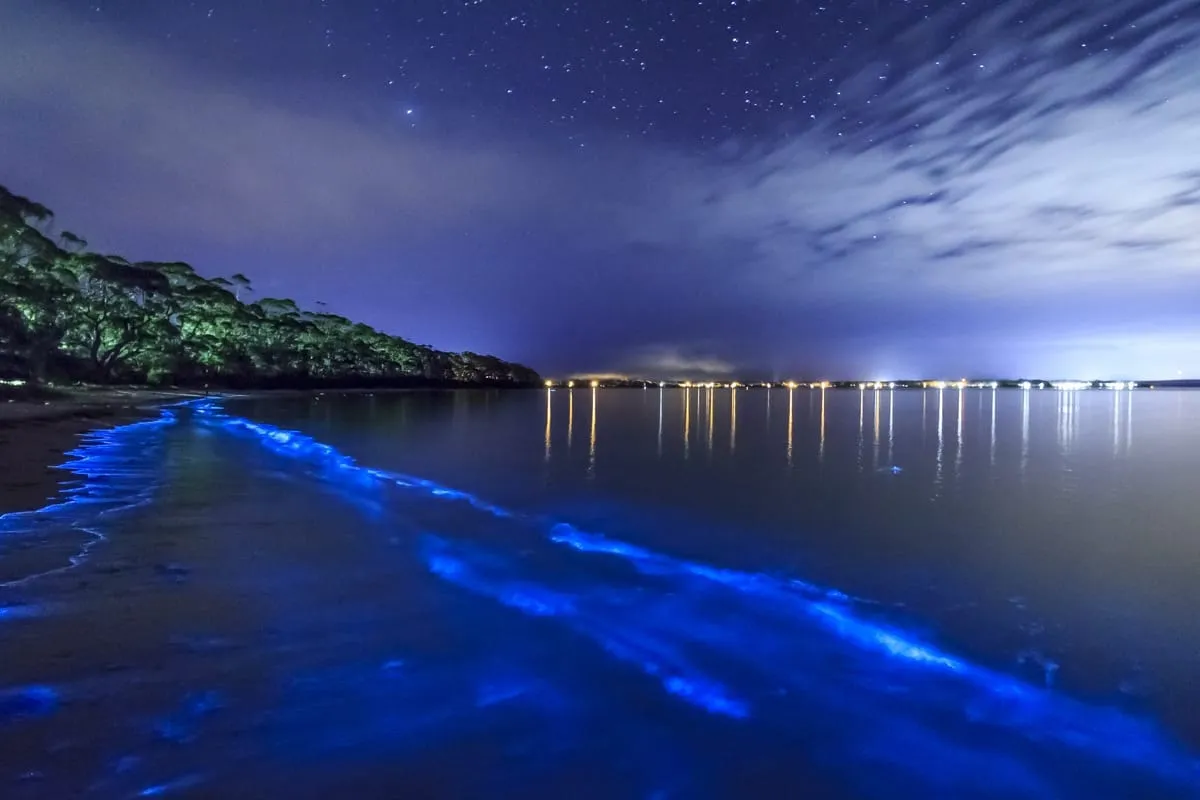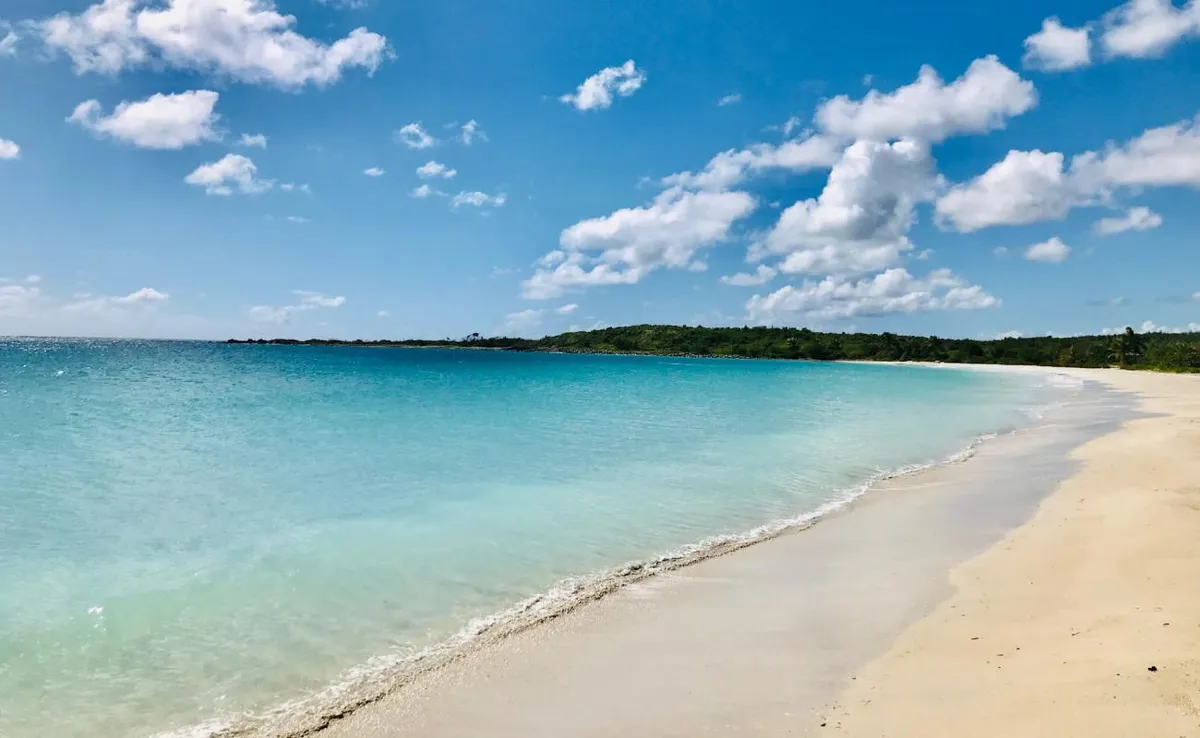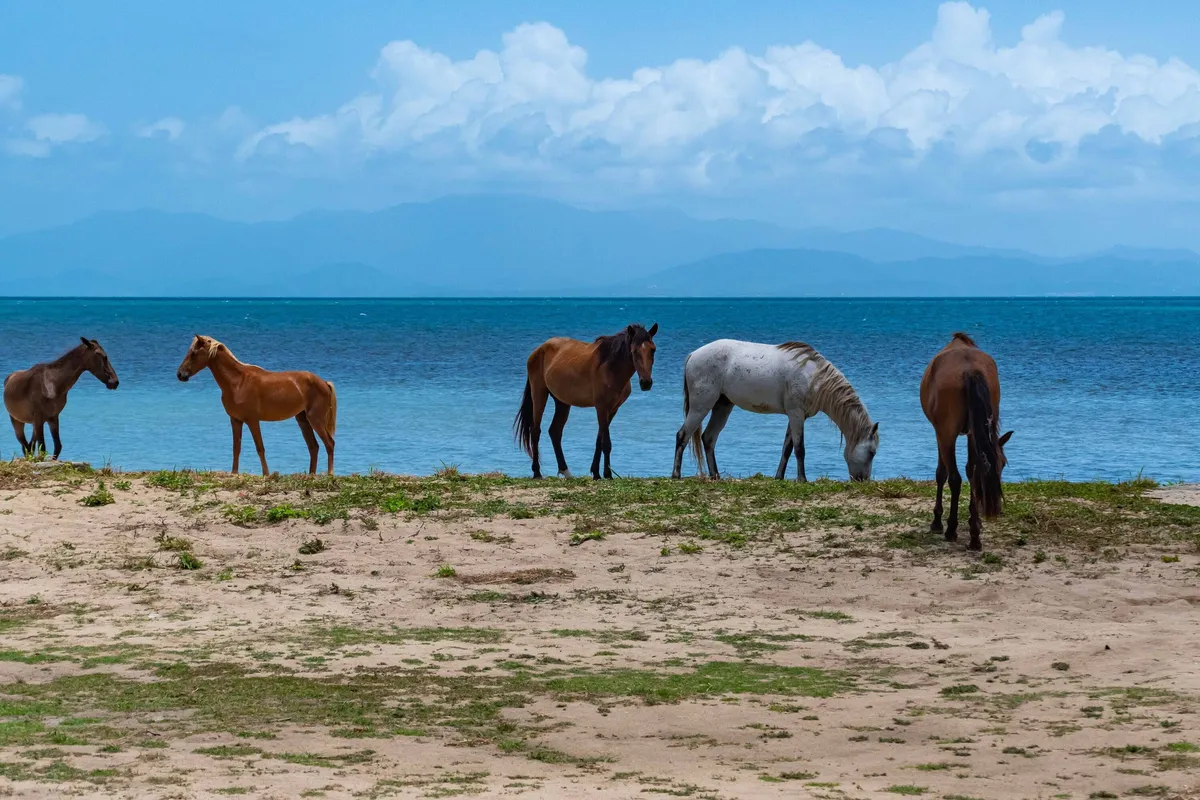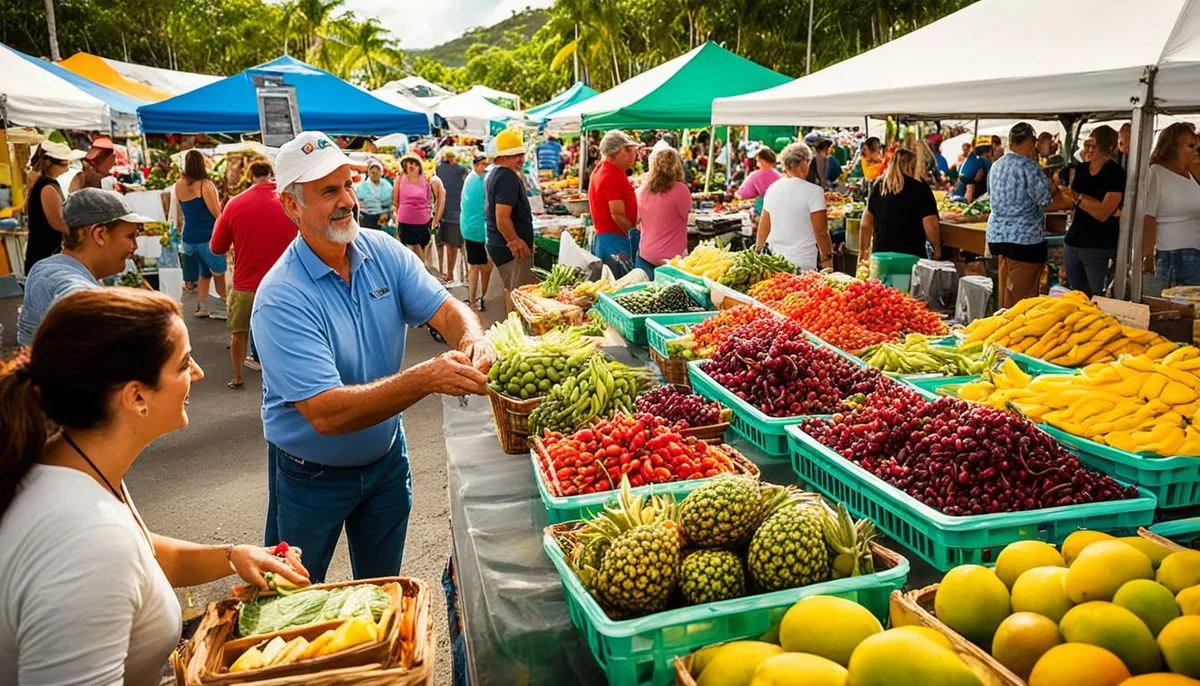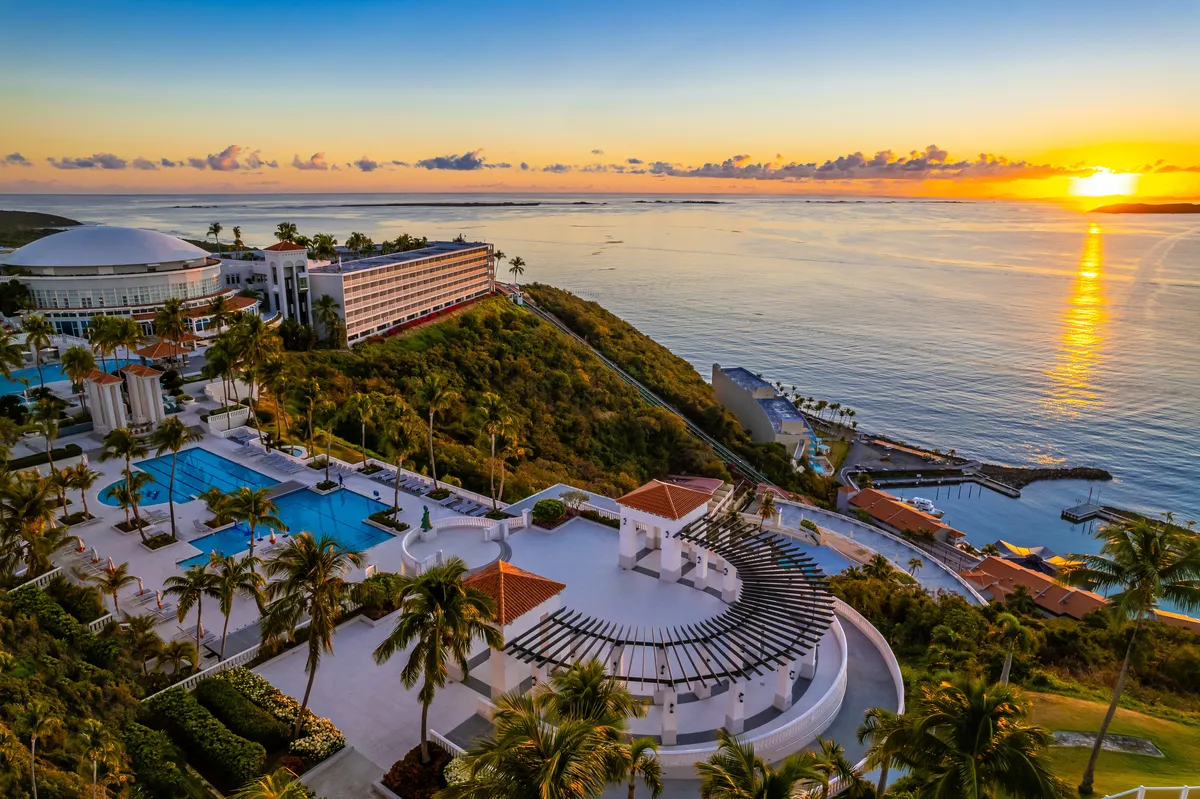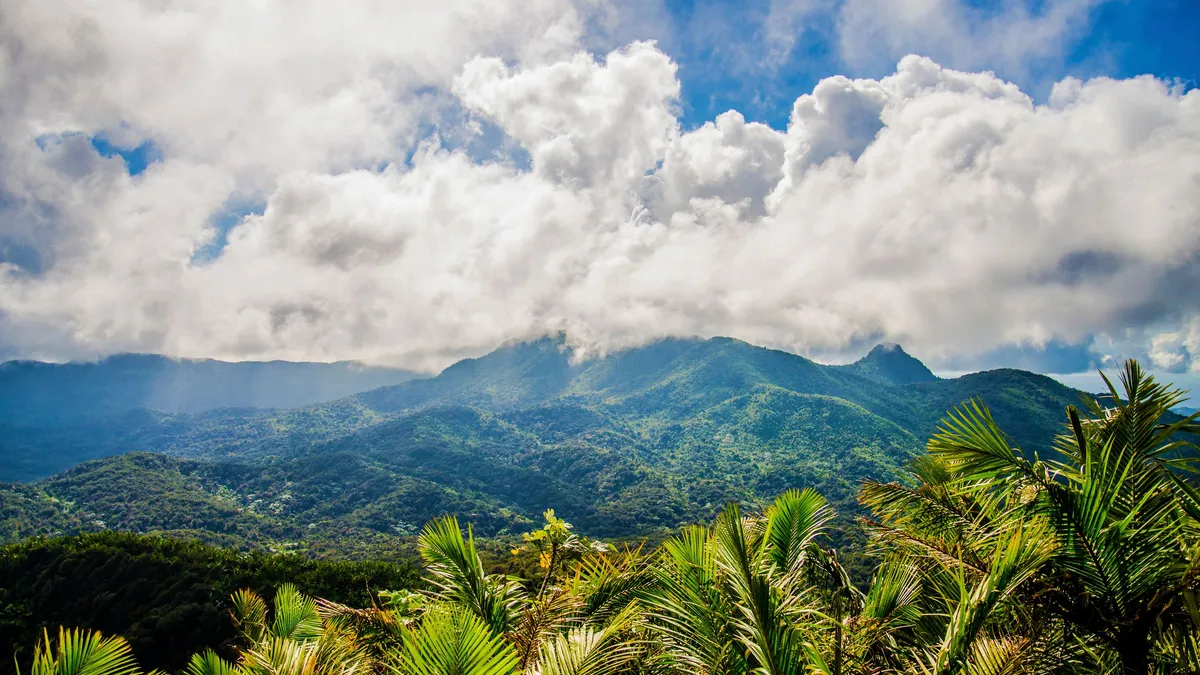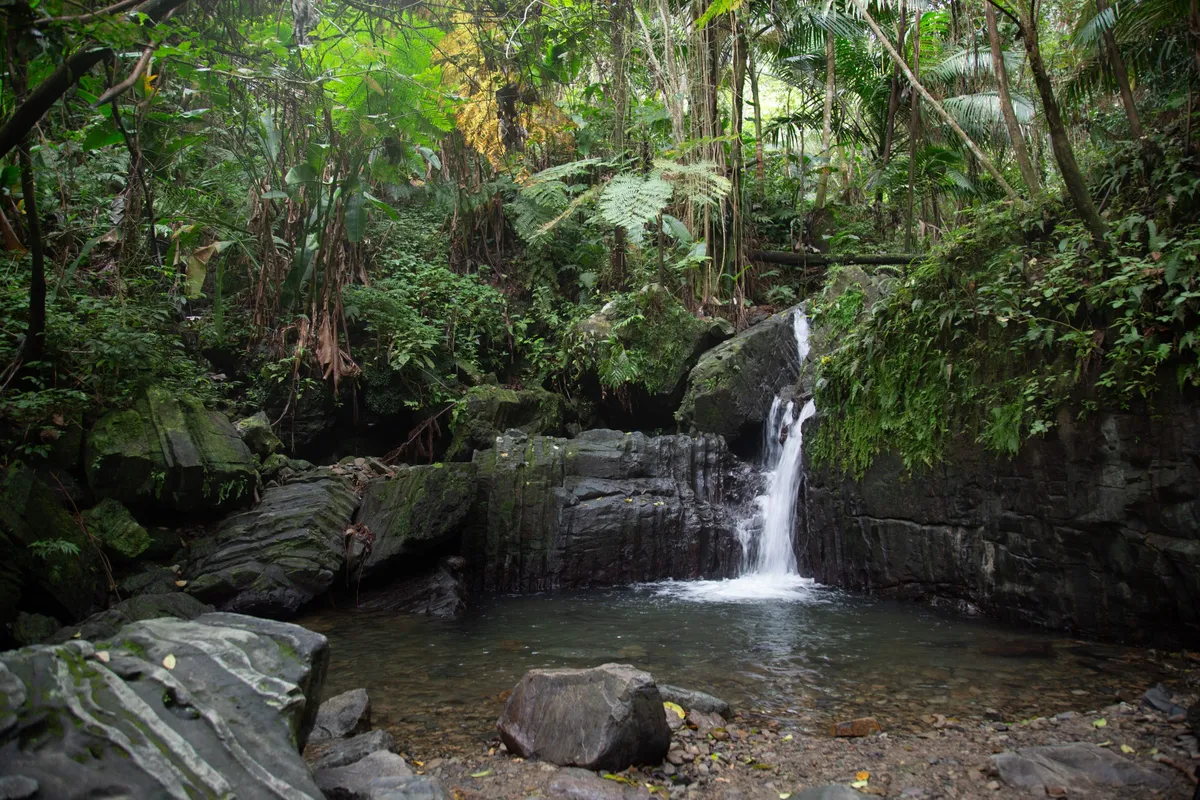Picture this: you’re driving down a dusty, potholed road when suddenly you round a corner and discover a perfect crescent of white sand meeting impossibly turquoise water, with maybe just one other vehicle in sight. Welcome to Vieques Puerto Rico, an island where this kind of magical discovery is a daily occurrence. Known affectionately by locals as Isla Nena or “Little Girl Island,” this remarkable destination offers something increasingly rare in the Caribbean—authentic, untamed beauty preserved by a fascinating history that turned military occupation into the ultimate conservation story.
Is Vieques Worth Visiting? An Honest Take
For travelers seeking an escape from the polished, all-inclusive resort scene, Vieques Puerto Rico delivers an unparalleled experience. The island’s crown jewel is Mosquito Bay, holding the Guinness World Record as the brightest bioluminescent bay on Earth. Beyond this natural wonder, you’ll find dozens of undeveloped, uncrowded beaches where you can often claim an entire stretch of sand for yourself, even during peak season.
The island operates on its own rhythm—there are no stoplights here, and life moves at the pace of the sun and tides. However, this untamed character comes with challenges that may make Vieques unsuitable for travelers seeking seamless convenience. Getting here requires deliberate planning, whether by a small plane or a ferry that demands advance booking. Roads can be narrow and potholed, especially the unpaved tracks leading to pristine beaches, making a capable vehicle essential.
These logistical hurdles aren’t just inconveniences; they’re the gatekeepers protecting the island’s unique character. The difficulty in reaching and navigating Vieques acts as a natural filter, preventing the mass tourism that has overwhelmed more accessible Caribbean destinations. The effort required is directly proportional to the reward: visiting one of the last truly unspoiled corners of the Caribbean.
Essential Planning: What to Know Before You Go
Do you need a passport?
As a U.S. territory, no passport is required for American citizens planning a trip to Vieques Puerto Rico. International travelers follow the same entry requirements as the mainland United States. The official currency is the U.S. Dollar, and while Spanish is primarily spoken among residents, English is widely understood in tourist areas.
When to visit
The sweet spot is from December through mid-April during the dry season, offering the most reliable sunny weather ideal for beach days and optimal bioluminescent bay visibility. This period overlaps with the high tourist season (November through May), so booking accommodations and transportation well in advance is crucial.
Choosing your base
Vieques has two main towns with distinct personalities. Isabel II serves as the administrative center where ferries arrive, offering a more local, residential feel with grocery stores and banks. Esperanza, on the south shore, is the tourism heart, featuring the waterfront Malecón lined with restaurants, bars, and tour operators, plus convenient walking access to Sun Bay Beach.
The Remarkable History That Shaped Today’s Paradise
Understanding Vieques means understanding its complex 20th-century story. In the 1940s, the U.S. Navy expropriated nearly three-quarters of the island, displacing thousands of residents to establish a bombing range and training facility. For six decades, the island endured military exercises until protests intensified after a civilian security guard, David Sanes, was killed by an errant bomb in 1999. This ultimately led to the Navy’s complete withdrawal in 2003.
Herein lies the remarkable paradox: the Navy’s controversial occupation inadvertently became the island’s most powerful conservation force. Nearly 18,000 acres of previously off-limits land became the Vieques National Wildlife Refuge, now the largest wildlife refuge in the entire Caribbean. By preventing private or commercial development like sprawling resorts or coastal condominiums, the military presence is the direct reason why Vieques remains an “unspoiled paradise” today.
Getting to Vieques: The Ferry vs. Flight Showdown
By ferry
The budget-friendly option costs only about $2 one-way for adults, departing from Ceiba on Puerto Rico’s eastern coast. The journey takes approximately 30 minutes on the fast ferry. While service has improved significantly under private management, booking tickets online well in advance is absolutely essential as they frequently sell out. Even with tickets, expect queues and wait times at the terminal.
By air
Small “puddle jumper” planes offer the fastest, most convenient option. Airlines like Vieques Air Link and Cape Air provide flights from San Juan’s main airport (SJU), the smaller Isla Grande airport (SIG), and Ceiba airport (RVR). The Ceiba flight is the shortest and cheapest (under 10 minutes), while San Juan flights offer direct connections after mainland flights but cost more. The main constraint is the strict luggage allowances on these 8-10 seater planes.
Getting Around Vieques: Why a Vehicle is Essential
A rental vehicle isn’t just a luxury on Vieques Puerto Rico—it’s an absolute necessity. The island’s greatest treasures, its secluded beaches, are spread throughout the sprawling Wildlife Refuge, far from the main towns. While public vans exist for point-to-point transport, they are impractical for comprehensive exploration and can become costly.
Jeep vs. golf cart debate
While golf carts seem fun and affordable, a Jeep or 4WD vehicle is overwhelmingly recommended for a Vieques car rental. Golf carts work for short trips around Esperanza’s paved streets but are slow, making trips to distant refuge beaches time-consuming. More importantly, they are ill-suited for the rough, unpaved refuge roads, offer no protection from sudden tropical downpours, and some rental companies restrict their use in these areas.
A Jeep provides the durability, ground clearance, and safety needed to confidently navigate the entire island, ensuring you can access remote gems like Playa La Chiva and Punta Arenas. Regardless of your choice, reserve your vehicle months in advance, as the limited island supply often books solid during high season.
The Main Event: The World’s Brightest Bio Bay
Mosquito Bay’s nightly spectacle results from an extraordinary concentration of Pyrodinium bahamense, bioluminescent marine plankton that flash blue-green light when disturbed. What makes this bay the world’s brightest—certified by Guinness World Records—is the incredible density of over 700,000 dinoflagellates per gallon of water. This concentration thrives thanks to the surrounding red mangrove forests releasing essential nutrients, while the bay’s narrow, S-shaped channel prevents the organisms from washing out to sea.
Timing is everything
The moon phase critically impacts your experience. The ideal time for a bioluminescent bay tour is during the new moon or within two to three days before or after, when the skies are darkest and the bioluminescence appears most brilliant. Conversely, the week surrounding a full moon is the worst, as bright moonlight significantly washes out the glow. Many tour operators won’t conduct tours on full moon nights or will provide tarps for groups to block the light.
Choosing your tour operator
Access to Mosquito Bay requires licensed tour operators to protect the fragile ecosystem—swimming is prohibited. The most significant differentiator is the kayak type, with transparent or glass-bottom kayaks highly recommended for unparalleled views of glowing trails and “shooting stars” created by fish beneath your hull. Guide quality also matters; the best are safety-conscious and knowledgeable about the bay’s ecology and the night sky’s constellations.
Best Beaches in Vieques: A Shoreline for Every Mood
Exploring the beaches is one of the top things to do in Vieques Puerto Rico. The island offers dozens of stunning coves and stretches of sand within the Wildlife Refuge and beyond.
Inside the refuge:
- Playa Caracas (Red Beach): Easily reached via a paved road, it features soft white sand, clear turquoise water, and convenient picnic gazebos perfect for families. The best snorkeling is along the rocky outcrop to the far left of the cove.
- Playa La Chiva (Blue Beach): Frequently cited as one of the Caribbean’s best beaches, this spectacular stretch features diamond-dust sand and water shifting through dozens of shades of blue. Its length ensures it never feels crowded, with the best snorkeling around numbered parking areas #8-10 and #14-15.
- Pata Prieta (Secret Beach): A small, secluded cove reached via a bumpy road, offering shallow, protected waters ideal for novice snorkelers and those seeking true tranquility.
Beyond the refuge:
- Sun Bay (Sombe): The island’s most full-service public beach near Esperanza, offering bathrooms, showers, lifeguards, and food kiosks. This magnificent, palm-lined crescent bay is where you’ll commonly spot the island’s famous horses strolling along the sand.
- Playa Negra (Black Sand Beach): An adventure requiring a 10-15 minute hike through a jungle creek bed, rewarding visitors with stunning jet-black volcanic sand that creates dramatic patterns against golden sand and turquoise waves.
Adventures Beyond the Beach
- Horseback Riding: Experience the island’s landscape on well-trained Paso Fino horses known for their incredibly smooth gaits. Reputable companies like Esperanza Riding Company offer guided tours through tropical trails and onto secluded beaches, including the dramatic Playa Negra, with many horses being well-cared-for rescues.
- Historical Exploration: Drive to the Puerto Ferro Lighthouse for breathtaking clifftop views over the Caribbean Sea. Explore the atmospheric ruins of the Central Playa Grande Sugar Mill, which is slowly being reclaimed by the jungle. Don’t miss the ancient Ceiba Tree—at over 375 years old, this massive, spiritual tree symbolizes the island’s resilience and serves as a favorite gathering spot for local horses.
- Snorkeling Hotspots: Mosquito Pier (Rompeolas) on the north shore features long pier pilings that create a habitat for countless starfish and sea turtles. Within the refuge, La Chiva offers healthy coral reefs and diverse fish populations, while Playa Caracas provides calmer, beginner-friendly experiences. Remote Punta Arenas (Green Beach) on the western tip offers encounters with sea turtles and stingrays in seagrass beds.
Where to Stay, Eat, and Drink
Accommodations reflect the island’s intimate character. Families appreciate the Sea Gate Hotel in Isabel II for amenities like children’s pools and spacious rooms. Couples seeking unique, wellness-oriented escapes find a haven at Finca Victoria, a stunning hillside retreat with vegetarian breakfasts and yoga by the pool. For heart-of-the-action stays, Esperanza offers excellent options like The Vieques Guesthouse and the architecturally striking El Blok hotel, just steps from the Malecón.
The dining scene highlights include El Quenepo in Esperanza, which provides premier fine dining with romantic, open-air seating overlooking the sea and elegant menus featuring fresh, locally caught seafood. For casual beachfront bites, Malecón institutions like Bananas and Duffy’s serve fish tacos, burgers, and cold Medalla beer with perfect views. Experience authentic Puerto Rican home cooking at Bieke’s Bistro in Isabel II, a local favorite serving flavorful dishes like whole fried red snapper and mofongo.
Essential Safety and Practical Tips
Vieques Puerto Rico is exceptionally safe for tourists, with petty theft being the primary concern, requiring standard precautions like not leaving valuables unattended. The beloved wild horses are semi-feral and should be admired from a respectful distance—never attempt to feed or pet them. Most importantly, drive with extreme caution, especially at night, as horses often stand on or cross narrow, poorly lit roads.
When exploring the Wildlife Refuge, obey all posted signs and never enter restricted areas still undergoing cleanup of unexploded ordnance from the Navy era. Bring and use insect repellent, especially on hiking trails and during the evenings. Book everything—flights or ferry, rental car, and bio bay tour—as far in advance as possible for high-season travel. Bring sufficient cash, as smaller establishments may not accept credit cards, and embrace “island time” by checking operating hours in advance, as they can change without notice.
Vieques Puerto Rico is more than a destination—it’s a feeling of discovery on deserted beaches, humbling encounters with centuries-old trees, and silent wonder at bays that glow in the dark. This island has fiercely held onto its identity, a place whose rugged beauty and tranquility were unintentionally preserved by a history of turmoil. It rewards travelers who make the effort to reach its shores with an experience of the Caribbean as it once was: wild, authentic, and profoundly magical.
Read more:
